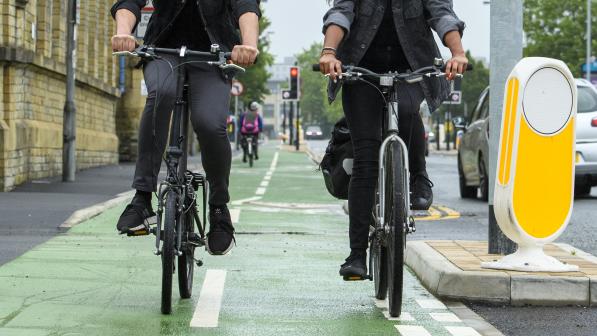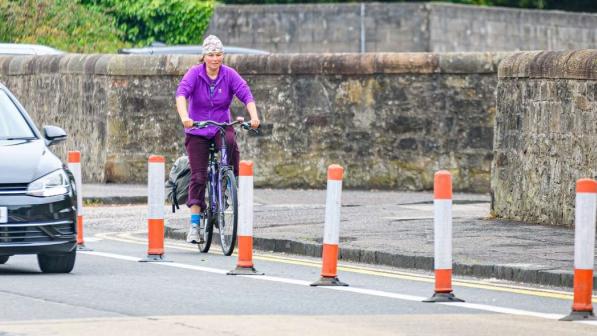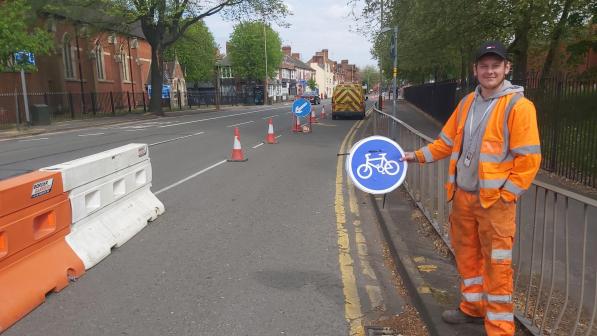Tell your local paper why cycle lanes make sense

Last week, we said it was time to fight back against the bike lane backlash directed at councils introducing temporary cycle lanes, low traffic neighbourhoods, and other active travel schemes.
We asked people to get in touch and let us know if their town or city was benefiting from pop-up cycle lanes or other measures designed to promote active travel, and many of you wrote in telling us about the good, the bad, and the places where nothing at all had happened!
Bikelash isn’t new
A vocal but loud minority of people, either frightened or angry about change, putting huge pressure on local authorities was a common theme in people’s responses.
‘Bikelash’ is neither new or unique to the UK, as shown in a study in New Zealand published in the Journal of Transport and Health in 2018. This outlined that, although the construction of bike lanes in communities was widely seen as an enabler of cycling, which in turn supported positive outcomes for population health, transport systems and the environment, proposals to change roads to include space for cyclists frequently encountered ‘bikelash’ despite the evidence for their benefits.
Organised opposition to bike lanes then had the effect of delaying, preventing and in some cases removing bike lanes in cities.
We’ve seen bikelash across the UK previously, but this summer the objections have been loudest in England, partly as a consequence of the timescales set by the Department for Transport (DfT) for councils to submit bids to the DfT’s emergency active travel fund (EATF) and then implement funded schemes.
Funding to English councils with highways responsibility is being delivered in two tranches, with councils already in receipt of tranche 1 funding for schemes that should have been implemented over the summer.
It’s worth noting that only around 20% of the £225 million EATF was allocated via tranche 1, with the balance expected to be allocated imminently. That’s why there’s a particular and urgent need to tackle the bikelash in England, because councils are about to be given further funding for schemes whilst still facing criticism for the schemes they’ve put in place over the summer.
Only hearing the critics
It’s fair to say that we’ve received responses from people saying they can’t support schemes their council has tried to implement, and that schemes weren’t properly thought through or consulted upon.
Where that’s the case, of course we need to let councils know, engage with them and offer constructive suggestions, but this really is a moment where it’s helpful to look at this through the eyes of your local council.
They were given new statutory guidance telling them to reallocate road space for significantly increased numbers of cyclists and pedestrians. They were then given a few weeks to submit bids and outline plans, with funding conditional upon starting the works outlined to secure funding within four weeks of receiving the cash and completing those works within a further eight weeks.
I’m not setting out that timescale as a criticism of the DfT or the EATF. It was a scheme set up at the height of the coronavirus pandemic requiring urgent action by councils, with a particular focus on enabling people to maintain social distancing while avoiding public transport.
But there’s now a risk that the only voices councils are hearing are the voices of those criticising schemes and calling for everything to be scrapped, when in many cases what’s required are revisions and tweaks.
Changing the narrative
If you’re reading this blog you’re likely to be someone, like me, who believes that governments should fund councils to build infrastructure that enables more people to walk and cycle, but there’s a danger those of us who hold that view fall into the trap of listening to like-minded people.
When we pick up the local newspaper that’s running another negative piece on cycle lanes or the council’s plans to restrict motor traffic in a residential area, we dismiss it rather than realising that others might read it and walk away believing cycle lanes cause congestion, are a waste of money, damage the local economy or, as Lord Lawson once ludicrously claimed in London, “were doing more damage to London than almost anything since the Blitz”
Over the next few weeks, we’re going to be trying to change that narrative about active travel investment, because councils receiving tranche 2 funding need to believe that there is still public support for this.
It would be fantastic if you could help us at a local level, starting with your local paper.
Fact or fiction
Where temporary cycle lanes and active travel schemes are being installed, most though not all papers are running one side of a story, quoting the objectors’ claims that cycle lanes are bad for business and cause congestion, that cyclists don’t use them and they are a waste of money, and that nobody was consulted.
These claims are all easy to rebut, and depending how much you want to read, here are some links to:
- Cycling UK’s two-page bikelash factfile
- Sustrans' two-page myth buster document about investment in cycling and walking
- A detailed 37-page report on misconceptions of active travel investment.
I live in Kent, and I know that Kent County Council are really getting it in the neck from a minority of people complaining about schemes the vast majority of people are either ambivalent about or supportive of. But not enough of the latter are telling the council that, and when I pick up the local paper, it reads as if everyone in Kent is against these schemes.
There’s little, if any, balance, and that’s why I’m going to be writing some letters to newspapers this weekend, to tell a different story.
What should I write?
In April, just after lockdown started, we asked people to write a letter to their local paper about how fantastic it was to be able to ride on quieter roads, and to see more children and families out cycling. Many did, with a huge number of local papers publishing those letters.
We produced a simple guide with tips on how to write to your local paper which you can use now to help draft a letter about temporary infrastructure in your area.
You might live in an area where the council has done nothing, and no infrastructure has appeared at all, and if so, you could write to explain why it should, and what the benefits could be.
Or you might live in an area where infrastructure has been installed, and it’s either good or excellent, in which case the council need to hear you say that and be encouraged to do more.
And you might live somewhere where infrastructure has been installed and heavily criticised, or even removed, where there’s a point to be made about learning from any errors and improving the initial temporary schemes.
There are too many potential scenarios to outline responses to cover all of them, but we’ve drafted two letters as examples of points you could make when writing to your local paper. These are nothing more than starters for ten, and any letter you do send needs to reflect your local circumstances, and what has happened with infrastructure and schemes where you live.
Making a difference
If you’re wondering whether this will make a difference, I’ll concede that one letter on its own won’t change the current media narrative about cycle lanes and active travel infrastructure, but that’s not the only thing we’ll be doing, and hundreds of letters in local papers from people who care about healthier streets and places would show councils that there is support for what the Government is telling them they must do, but which many are starting to feel nervous about.
So please engage your inner scribe, help us change the narrative, and start writing!





